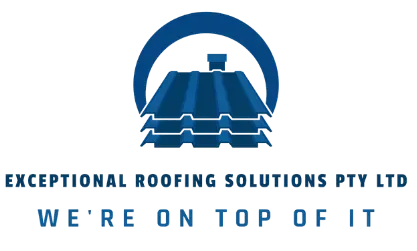Living in Australia means dealing with a broad spectrum of weather extremes. From the scorching hot summers to the chilly winters, our homes need to withstand these varying conditions and still provide us with the utmost comfort.
But here’s the catch—while we’re all keen to keep our homes cosy or cool as per the season, no one wants to face sky-high energy bills. So, how can we strike a balance? Well, the answer lies in two essential elements: ventilation and insulation. These two factors play a pivotal role in maintaining not just the comfort of your home, but also its energy efficiency.
Ventilation and insulation might not be the most glamorous topics but they are two of the most crucial elements in creating a comfortable and energy-efficient home. Proper ventilation can help regulate temperature, reduce energy consumption, and even prevent health problems caused by damp and mould. Good insulation, on the other hand, keeps your home cooler in summer, warmer in winter, and quieter all year round.
Whether you’re living in the tropical north or the cooler southern states, these features are a must-have for any Australian home. So, let’s dive into the world of ventilation and insulation and see how they can maximise comfort and energy efficiency in your home.
The Role of Roof Ventilation in Maintaining Comfort and Air Quality
1. Temperature Regulation: Efficient roof ventilation systems are designed to promote air circulation, preventing heat build-up in the roof space and lowering the overall temperature of your home. This results in a more comfortable living environment and reduced reliance on air conditioning systems, ultimately conserving energy and reducing electricity costs.
2. Moisture and Humidity Control: Proper roof ventilation helps to prevent the build-up of moisture and humidity, reducing the chances of mould and mildew growth. By allowing stale, humid air to escape and be replaced with fresh air, roof vents can help protect your home and its occupants from potential health hazards linked to excess moisture.
3: Roof Material Longevity: Adequate roof ventilation can significantly extend the lifespan of your roofing materials by reducing heat stress on shingles, tiles, and other elements. By maintaining optimal temperatures within the roof space, ventilation systems work to preserve the structural integrity of your roof and reduce the need for frequent repair or replacement.
Insulation: Retaining Warmth and Reducing Heat Transfer
1. Energy Efficiency: Insulation creates a thermal barrier, effectively reducing the transfer of heat between the interior and exterior of your home. This consistent temperature regulation results in reduced energy consumption, helping to lower your heating and cooling expenses.
2. Noise Reduction: Proper insulation can also serve as an effective sound barrier, minimising the transmission of noise between rooms and from external sources. This added layer of noise reduction can vastly improve the overall comfort and enjoyment of your living spaces.
3. Building Durability: Homes that utilise both insulation and ventilation systems typically experience less overall wear and tear, as these combined systems work to prevent temperature fluctuations throughout the building, extending the lifespan of various materials and structural elements.
Choosing the Right Ventilation and Insulation Materials for Your Home
1. Natural Ventilation: Natural ventilation systems rely on wind and thermal buoyancy to circulate air within your home. Solutions such as ridge vents, soffit vents, and gable vents can be integrated into your roofing system to promote air circulation and maintain a comfortable temperature without the use of electrical power.
2. Mechanical Ventilation: Mechanical ventilation systems utilise powered fans to extract and circulate air, providing a more controlled and efficient means of maintaining optimal indoor conditions. Popular options include roof-mounted exhaust fans, whole-house ventilation systems, and attic-mounted circulation fans.
3. Insulation Materials: There are various insulation materials available, each with distinct advantages and characteristics. Some popular options include fibreglass batts, rockwool, spray foam, and reflective foil. The appropriate insulation material for your home will depend on various factors, such as your climate, energy efficiency goals, and budget considerations.
Regular Maintenance and Inspection of Ventilation and Insulation Systems
1. Periodic Inspections: To ensure the ongoing effectiveness of your home’s ventilation and insulation systems, it’s essential to perform regular inspections for any signs of damage, wear and tear, or reduced performance.
2. Professional Maintenance: Engaging expert assistance, such as the team at Exceptional Roofing Solutions, for inspections and maintenance can help identify potential issues early on and ensure your systems continue to operate at peak performance.
3. Efficiency Upgrades: As technology and building materials continue to evolve, it may be beneficial to evaluate and upgrade your existing ventilation and insulation systems with modern solutions designed to operate more efficiently and provide enhanced performance.
How to Maximise Energy Efficiency with Proper Ventilation and Insulation
Investing in a well-insulated and well-ventilated home is an investment in your comfort and health, as well as your wallet. You save money in the long run with lower energy bills, but you also enjoy a more pleasant living environment. This is particularly important in Australia, where the climate can be unpredictable, and temperatures can soar or drop dramatically.
The team at Exceptional Roofing Solutions is ready to assist you in achieving optimal ventilation and insulation for your home. With our expertise and dedication to unmatched customer service, we will guide you through every step of the process, from selecting the appropriate systems to their professional installation and ongoing maintenance.
Contact us today to discuss your ventilation and insulation needs, and take the first step toward creating a more comfortable, sustainable, and energy-efficient home for your family.
